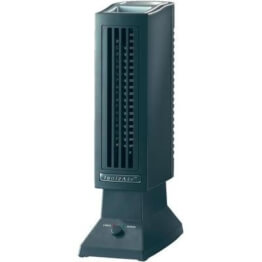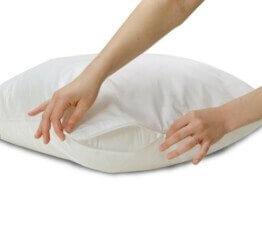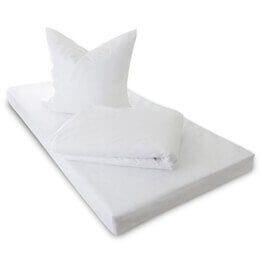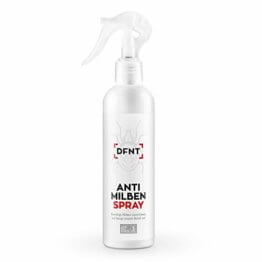Dust mites – your guide to an allergy free life
There are hardly any regions in the world where dust mites are not found. Even in our regions mites are part of everyday life in apartments and houses. We don’t see them, we don’t hear them, we don’t smell them – nevertheless they are there and cause big problems, especially for allergy sufferers who suffer from a house dust mite allergy (also often just called house dust allergy). The dust mite allergy is one of the most common forms of allergies worldwide (besides the pollen allergy). What you should know about house dust mites (which are not without reason also called bed mites or house mites) and how you can reduce the mites in bed, pillows and other places, we tell you in our independent guide.
- Very important: Mites can be found in every (!) household. Dust mites are absolutely no sign of a lack of hygiene in the household.
Bestsellers
Spread of the mites
The fact is that dust mites are found in every household. Since their preferred diet is skin scales, they mainly stay where they find almost unlimited “food”: in your bed.
In summary, house dust mites can be found mainly where dust gets stuck well, resulting in a high mite count.
Most common occurrences
- – in mattresses in the bed
- – in pillows
- – in upholstered furniture (like couch or armchair)
- – in carpets and books
Another reason why bed mites are mainly found in the bed and pillow is the sweat that mainly sleeping people produce.
During the night, this is about 40 grams of water per hour, which is excreted in the form of both breath and sweat. Per night, therefore, about 180 to 220 grams of moisture are released to the mattress and about 15 to 20 grams of moisture to the pillow. All this is a found food for the arachnids, which have some natural enemies (e.g. silverfish or book scorpions), but these in turn are so rare in this habitat that house mites can develop almost freely.
.
- An interesting fact: Although mites are widespread throughout the world, there are still regions where they are almost not found at all. These are regions above 1,500 metres or even in the Antarctic or desert – the environmental conditions there ensure that mites would not survive or only rarely survive.
The “optimal living conditions” for dust mites
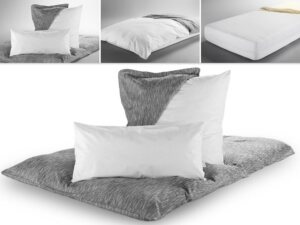 You want to reduce the number of dust mites in your own four walls for sure, right? For this it is important to know which living conditions are considered optimal by the animals.
You want to reduce the number of dust mites in your own four walls for sure, right? For this it is important to know which living conditions are considered optimal by the animals.
- room temperature of 25 degrees Celsius and above
- air humidity of about 65 to 80 percen
This means that dust mites multiply mainly from May to October of a year. Nevertheless, it is particularly difficult for allergy sufferers after this period, as the mites decompose into dust which is swirled around in the room by the heating air. In autumn and winter it is therefore particularly bad for mite allergy sufferers.
.
How dust mites spread
Even the slightest movement can cause dust mites to spread further and cause great discomfort, especially for allergy sufferers. Just think of how much dust is stirred up when you only shake out your duvet once in the morning. Trough
- shake the duvets
- movements on the mattress
- sitting in an armchair or on the coach
- walking on carpets
- drafts (for example when vacuuming)
and many other household activities the dust raises. Thus the excrement of the mites loosens and disintegrates, since it is dried out after excretion. These smallest particles combine with the house dust and are inhaled by humans. Allergic reactions are triggered.
Mites – worldwide spread arachnids
When people talk about mites, they are talking about a living being that belongs to the arachnids. In our realm we encounter
- the European mite (Dermatophagoides pteronyssinus)
- and the American mite (Dermatophagoides farinae)
The animals are not visible with the eye, as they are only 0.1 to 0.5 mm in size. However, they are white animals with hairy bristles.
- Important: Mites themselves are not dangerous for you! The animals are not able to bite (like bedbugs) or sting (like mosquitoes). Diseases are also not transmitted by mites or textiles destroyed, as moths do. Nevertheless, unsightly skin reactions can occur, which are treated in the same way as mosquito or insect bites, although they are not bites.
In earlier times, dust mites were only found in birds’ nests, but the animals also spread into people’s homes and were thus abducted worldwide. Nowadays, they are almost only found in human houses and apartments, as they usually cannot survive outdoors (only rarely, such as in bird nests).
Nutrition and life expectancy
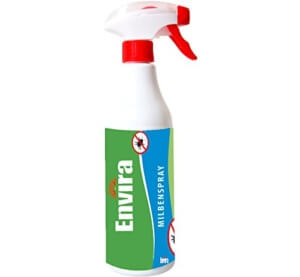 Since mites are primarily known as dust mites, the name also has a certain meaning. Mites preferably feed on
Since mites are primarily known as dust mites, the name also has a certain meaning. Mites preferably feed on
- Skin scales
- Moulds
- and flour product components
Usually only about 2 to 4 months old, a mite is able to produce excrements about 200 times its weight.
Since skin scales are among the preferred treats of dust mites, it is not surprising that the small animals are primarily found in bed. People lose 0.5 to 1 gram of skin scales per day – a large proportion of these skin scales in bed and in other upholstery and fabric areas where dust can easily collect.
This amount of one person alone makes it possible to feed 1.5 million dust mites for one day!
Not without reason dust mites (scientifically Dermatophagoides) have been given the name “skin eaters”.
House dust allergy – when dust becomes a health trap
People who suffer from a house dust allergy do not basically have a problem with mites. Instead, the persons concerned react allergically to the excrement (at least to a large extent), which is also transmitted by breathing in the house dust. In this case, it is an inhalative allergy that triggers an allergic reaction.
As the allergens are mostly found in the faeces, but also to a small extent in the mite’s body, this is colloquially referred to as a house dust mite allergy. According to the German Allergy and Asthma Association (DAAB), about 10% of people in Germany suffer from a house dust mite allergy.
Symptoms of the allergy
If you yourself are unsure whether you suffer from a house dust allergy or house dust mite allergy, then pay attention to the following allergy symptoms:
- itchy eyes
- watery eyes
- headaches
- sore throat
- irritation of the throat
- sniffles
- sneezing
In summary, the house dust allergy symptoms are very similar to the symptoms that occur with a cold or as symptoms of hay fever.
Video-Link: https://www.youtube.com/watch?v=OmH7mVPpvR0
What you can do
In any case, you should seek medical clarification as to whether it is a corresponding allergy (regardless of whether it is a cat allergy, allergic asthma, allergic rhinitis, hay fever symptoms or other problems of this type).
What can be solved by an allergy nasal spray in the case of a small problem, however, is not easily possible in the case of a nasal spray allergy and more difficult allergy problems.
- Important: If you recognize or feel skin reactions or even shortness of breath, you should consult a doctor immediately!
In order to observe the problem itself and “monitor” the individual house dust mite allergy symptoms, a
so-called mite diary is suitable.
Of course, the information does not replace an allergy test, but you can at least document your allergy symptoms with it, which will also be very useful for your doctor. In any case, a visit to your doctor will tell you which allergy medication can be prescribed additionally in your case.
Nowadays there are significantly more people allergic to mites than in the past. Why? This has not been conclusively scientifically clarified. Maybe the changed living conditions of our present time are the reason, because we attach more importance to hygiene (change of the immune system), but also less often come into contact with fungi or bacteria – a fact that definitely occurred more often in earlier generations and times of mankind than today.
- What happens if you’re allergic to mites: When the nasal or conjunctival mucous membranes of the affected person come into contact with allergens (hence the term “contact allergy”), an immune response occurs, which is classified as immediate type I allergy. The immune system now has a lot to do, as it tries to use Ig E antibodies to fight the allergen. This in turn releases histamine, which leads to an inflammatory reaction in the affected person – either at the site of allergen contact or at another part of the body.
Since mites also feel particularly comfortable in higher humidity, the improved flats and houses also ensure an increase in the mite population. Because properties are better insulated and isolated, the humidity is also higher, which mites consider to be a natural food source.
How to fight dust mites
While it would not be possible to completely and truly eliminate or eliminate mites, you can still take many steps to contain or greatly reduce the population in order to control mites in the long term. Especially as an allergy sufferer it is important that you get the mites problem under control.
Temperature and humidity
 As already learned, mites do not feel comfortable at low temperatures and low humidity. This even goes so far that the mite density is greatly reduced when the air is too dry (for example, in winter during the heating period). As a tip, it is recommended to lower and keep the humidity lower for a longer period of time to reduce the density. However, this happens automatically in winter, so that the living conditions for mites are always somewhat worse at this time of year. You can also reduce the humidity in summer by using a so-called dehumidifier in your own four walls, which draws the moisture out of the air.
As already learned, mites do not feel comfortable at low temperatures and low humidity. This even goes so far that the mite density is greatly reduced when the air is too dry (for example, in winter during the heating period). As a tip, it is recommended to lower and keep the humidity lower for a longer period of time to reduce the density. However, this happens automatically in winter, so that the living conditions for mites are always somewhat worse at this time of year. You can also reduce the humidity in summer by using a so-called dehumidifier in your own four walls, which draws the moisture out of the air.
Mattress
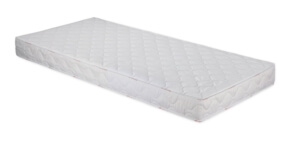 If you have been diagnosed with a dust mite allergy, it is not enough to simply change the bed linen or pillow. Instead, in our experience, you should invest in a new mattress (and refurbish old mattresses with intensive mattress cleaning), which is still almost “uninhabited”. You can protect the new mattress with additional and special covers (called encasings), which in turn ensure that the small animals cannot penetrate the mattress’s fabric.
If you have been diagnosed with a dust mite allergy, it is not enough to simply change the bed linen or pillow. Instead, in our experience, you should invest in a new mattress (and refurbish old mattresses with intensive mattress cleaning), which is still almost “uninhabited”. You can protect the new mattress with additional and special covers (called encasings), which in turn ensure that the small animals cannot penetrate the mattress’s fabric.
Special sheet
 Apart from the mattress, you can also “only” use a normal bed sheet, which should be washed regularly. Basically, this is also recommended if you use a mattress with special covers – better protect yourself twice and then use a normal bed sheet, which can be washed at 60 degrees. You can also buy special bed linen for allergy sufferers, which is a little more expensive, but can provide a strong remedy for symptoms. This applies not only to mite allergies, but also to various other problems (e.g. neurodermatitis, cross-allergy, cat hair allergy or dog allergy/dog hair allergy or generally an animal hair allergy, dust allergy, pollen allergy and its pollen allergy symptoms). For many other types of allergies (e.g. nickel allergy, histamine allergy or general food allergy/food allergy, glutamate allergy, mosquito bite allergy, kiwi allergy, mugwort allergy) this bed linen unfortunately does not help.
Apart from the mattress, you can also “only” use a normal bed sheet, which should be washed regularly. Basically, this is also recommended if you use a mattress with special covers – better protect yourself twice and then use a normal bed sheet, which can be washed at 60 degrees. You can also buy special bed linen for allergy sufferers, which is a little more expensive, but can provide a strong remedy for symptoms. This applies not only to mite allergies, but also to various other problems (e.g. neurodermatitis, cross-allergy, cat hair allergy or dog allergy/dog hair allergy or generally an animal hair allergy, dust allergy, pollen allergy and its pollen allergy symptoms). For many other types of allergies (e.g. nickel allergy, histamine allergy or general food allergy/food allergy, glutamate allergy, mosquito bite allergy, kiwi allergy, mugwort allergy) this bed linen unfortunately does not help.
Special pillows
![]() The so-called encasing covers are also offered for cushions. These are covers that are so dense that the mites cannot penetrate the fabric.
The so-called encasing covers are also offered for cushions. These are covers that are so dense that the mites cannot penetrate the fabric.
Filter vacuum cleaner
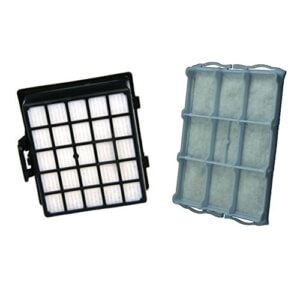 Not only the bed itself should be specially treated if you want or need to reduce the number of dust mites. The vacuum cleaner is also your best friend in this case. Get a model with a filter for allergy sufferers, which are so-called Hepa filters or Ulpa filters. With a normal vacuum cleaner, the allergens are spat out again when you vacuum – with a filter vacuum cleaner they remain in the bag. If you are an allergy sufferer, ask your health insurance company whether certain special vacuum cleaners or duvet covers and more are subsidised. Tip: Vacuum the mattress as well as the upholstery in the living room daily with a hand vacuum cleaner (of course with Hepa filter). Also remove the dust bunnies on smooth floors. Once a month use the mattress cleaner additionally. A wet vacuum cleaner also removes deep-seated dust from carpets. All these measures already reduce the allergy burden considerably.
Not only the bed itself should be specially treated if you want or need to reduce the number of dust mites. The vacuum cleaner is also your best friend in this case. Get a model with a filter for allergy sufferers, which are so-called Hepa filters or Ulpa filters. With a normal vacuum cleaner, the allergens are spat out again when you vacuum – with a filter vacuum cleaner they remain in the bag. If you are an allergy sufferer, ask your health insurance company whether certain special vacuum cleaners or duvet covers and more are subsidised. Tip: Vacuum the mattress as well as the upholstery in the living room daily with a hand vacuum cleaner (of course with Hepa filter). Also remove the dust bunnies on smooth floors. Once a month use the mattress cleaner additionally. A wet vacuum cleaner also removes deep-seated dust from carpets. All these measures already reduce the allergy burden considerably.
Curtains
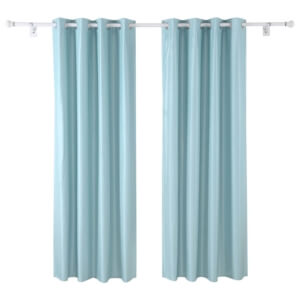 Not only your bed has lots of textiles, also the curtains in many apartments and houses are made of fabric. So wash your curtains regularly to avoid mites or at least reduce their number. Because curtains like to gather dust, they are among the items that are less in the focus of “cleaning”.
Not only your bed has lots of textiles, also the curtains in many apartments and houses are made of fabric. So wash your curtains regularly to avoid mites or at least reduce their number. Because curtains like to gather dust, they are among the items that are less in the focus of “cleaning”.
Carpets
![]() Many people love carpets that are particularly long and fluffy. We can understand that, but for allergy sufferers exactly this is wrong. Instead, get a short carpet (better yet, a smooth floor where you can vacuum and mop regularly).
Many people love carpets that are particularly long and fluffy. We can understand that, but for allergy sufferers exactly this is wrong. Instead, get a short carpet (better yet, a smooth floor where you can vacuum and mop regularly).
Shelves
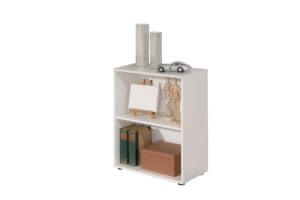 Watch out for anything that might turn out to be a dust trap. This can also be book shelves where the mites get stuck in the open compartments in the books – closed cupboards are more suitable.
Watch out for anything that might turn out to be a dust trap. This can also be book shelves where the mites get stuck in the open compartments in the books – closed cupboards are more suitable.
Mite spray and Co.
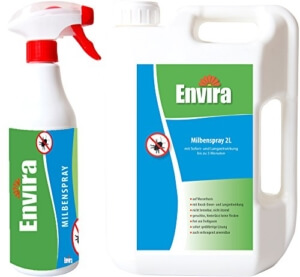 In the trade you can expect numerous products that can also significantly reduce the number of mites. These include detergent additives against mites, which can reduce the number of mites.
In the trade you can expect numerous products that can also significantly reduce the number of mites. These include detergent additives against mites, which can reduce the number of mites.
Upholstered furniture
![]() Do without upholstered furniture that is too old if you want to reduce the mites. In general, leather is more suitable than fabric, as fabric covers require more cleaning.
Do without upholstered furniture that is too old if you want to reduce the mites. In general, leather is more suitable than fabric, as fabric covers require more cleaning.
Cuddly toys
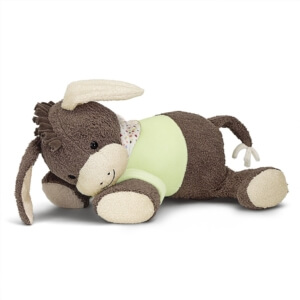 Even cuddly toys, such as giant teddies, can cause a veritable accumulation of mites. The cuddly toys don’t have to be washed by force, even a visit to the freezer ensures that the living conditions for mites are no longer sufficient.
Even cuddly toys, such as giant teddies, can cause a veritable accumulation of mites. The cuddly toys don’t have to be washed by force, even a visit to the freezer ensures that the living conditions for mites are no longer sufficient.
Blankets and pillows
 On the coach, on the armchair, on the bed – everywhere we scatter decorative blankets and pillows, which are mainly optical highlights and also serve for cuddling in the evening. However, these fabrics are also true mite hostels, which is why you should wash the covers of the pillows and blankets frequently or generally replace them.
On the coach, on the armchair, on the bed – everywhere we scatter decorative blankets and pillows, which are mainly optical highlights and also serve for cuddling in the evening. However, these fabrics are also true mite hostels, which is why you should wash the covers of the pillows and blankets frequently or generally replace them.
When fighting mites, try to avoid all materials that are not absolutely necessary (e.g. additional pillows and blankets). For your bedding, use fabrics that are sold as “mite-proof”. You should also ensure cleanliness in your home (although mites are not a sign of a lack of hygiene) by vacuuming and mopping your floors frequently, washing curtains regularly and avoiding dust traps (e.g. open bookshelves).
Mite allergy and pets – how to proceed?
Your pet itself is no problem if you suffer from a dust mite allergy. However, a dog or cat will make mites feel a little more comfortable in your home, as they will stir up extra dust and provide more moisture.
mites in animals
Since it is perfectly natural that you, as a dog or cat owner, do not want to be separated from your pet, you should at least not let the animal sleep in the bedroom.
This may not be easy and not always feasible, but it is worth a try to make it even more difficult for mites.
Video-Link: https://www.youtube.com/watch?v=YhzXrt19W6U
When it comes to mites, there are many different species, of which the mite is only one subspecies.
The flour mite, which is also called the food mite or Acarus Siro, can also be found in many households – much to people’s chagrin.
Mite species
Worth knowing: Irrespective of the mites, mites can also occur in dogs. A distinction is made between different species.
- Demodicosis: This is a type of mange, which in turn is caused by the so-called hair follicle mite. As a rule, dogs do not have any problems with this mite, provided their immune system is strong enough.
- Ear mite infestation: Ear mites dog – not a nice topic for pet owners. These mites in dogs infest the auricle as well as the external auditory canal of the animal. For dogs, this infestation is primarily expressed by a strong itching.
- Mange: What is mange in dogs is called scabies in humans. This problem is caused by scabies mites or mange mites – it is also the most common type of mite in dogs.
- Predatory mite infestation: These mites usually colonize the back of the animal, also with a strong itching and scaling of the fur.
Our bestsellers
* = Affiliate-Link / Advertisement
Letzte Aktualisierung der Amazon-Preise am 2024-11-29 | Preise können sich inzwischen geändert haben Affiliate Links & Bilder von der Amazon Product Advertising API | Preis inkl. MwSt., zzgl. Versandkosten


